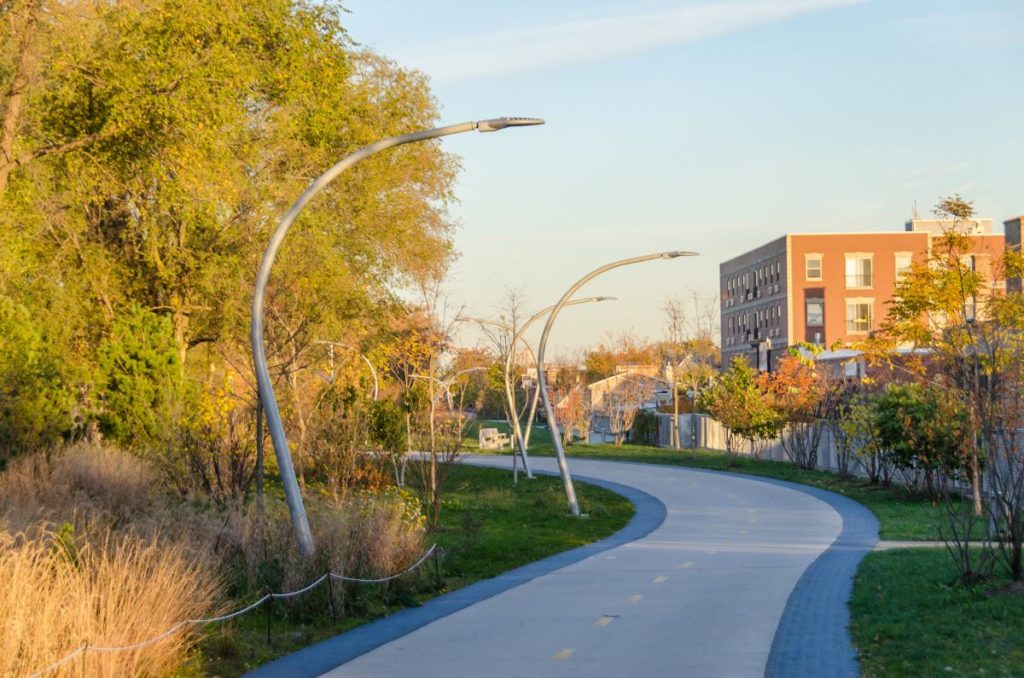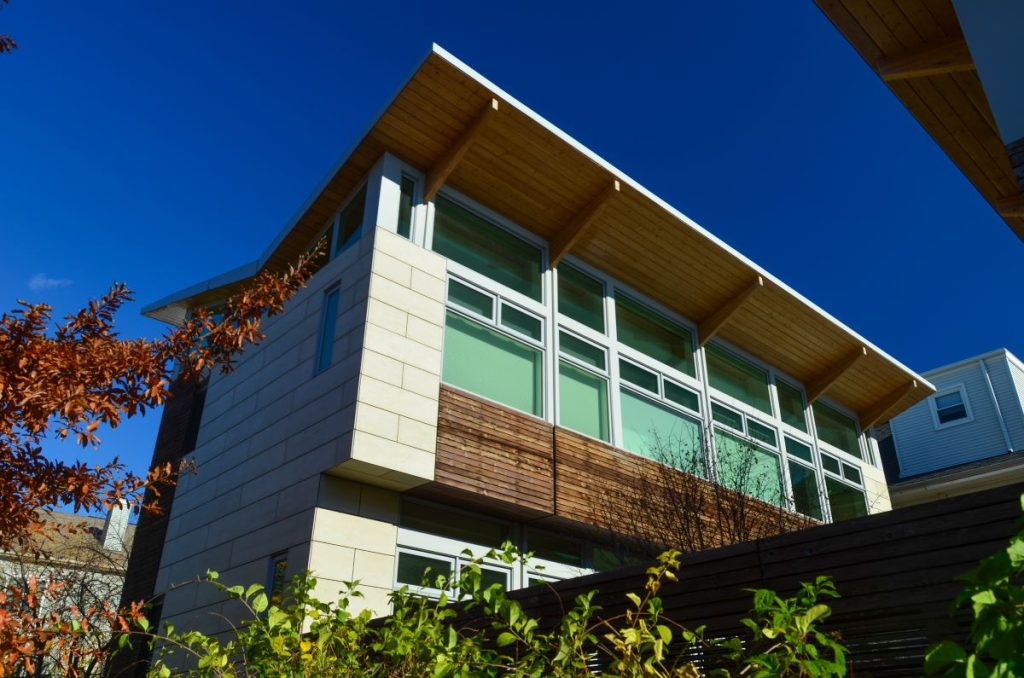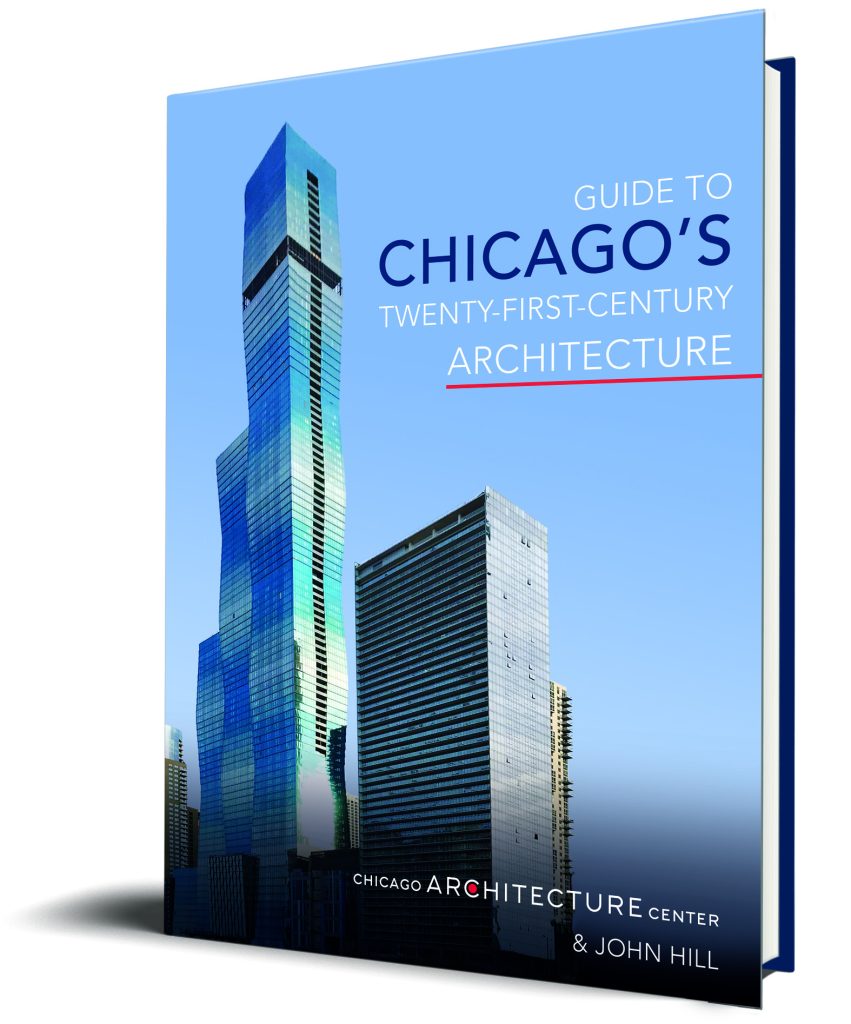Concluding our tour of Chicago’s outdoor architectural sites with the Guide to Chicago’s Twenty-First-Century Architecture, by the Chicago Architecture Center and John Hill. See here and here for the other parts of the series.

The 606
Along Bloomingdale Avenue from Ashland to Ridgeway Avenues
One of Chicago’s most talked-about outdoor spaces, the 606 repurposes a defunct railroad line into a trail. The 606 connects the Bucktown and Humboldt Park neighborhood via a bicycle trail. But walking paths flank the 606 to provide enjoyment for two- and four-legged pedestrians.
But the 606 offers more than a ride or a walk. Per the Guide:
“The 606 connects street-level parks along its length. Some of these parks existed beforehand and some are new. Several are immediately adjacent to the elevated trail and serve as access points to it, while some are located a few blocks away. Highlights of The 606 occur where the trail expands, creating places to sit, to get off and head to a park, or to look at public art by Frances Whitehead, who created a number of environmental pieces along the trail, including an observatory on the western terminus.”

Yannell Net-Zero Energy Residence
4895 North Ravenswood Avenue
City government and Chicago homeowners have begun to embrace green architecture. Residences and low income housing alike apply the concepts. Though generally closed to the public, these buildings show that style and environmental consciousness can come together with striking effect.
The Guide highlights a number of these structures. For instance, this home sits at North Ravenswood Avenue and West Ainslee Street. Its distinctive butterfly roof is easy to spot from the street. The building itself includes several groundbreaking features:
“Active energy strategies that include three elements taking advantage of the butterfly roofs: solar panels for electricity, solar thermal panels for hot water and radiant heating, and rainwater recycling for irrigation. In addition, the home includes a geothermal system for heating and cooling and the city’s first residential graywater system. Passive energy strategies focus on a southern orientation for maximizing solar heat gain in the winter, while generous overhangs shield the large glass walls from the high summer sun.”
Guide to Chicago’s Twenty-First-Century Architecture
Explore a new century of architecture in one of the world’s majestic cityscapes. With almost 400 color photos and maps of 24 walking tours chosen by the experts at the Chicago Architecture Center.

